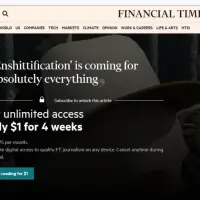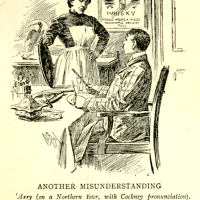Truly, and in both ways, this is a weird book. Charles Williams‘ (in)famous novel, Descent into Hell (1937), encapsulates Williams‘ idea of “Co-Inherence,” Substitution, or the Way of Exchange. This is a complex, many-layered, lovely, and disturbing book. It is definitely worth reading, but as much as I love this novel–and think it’s Williams‘ most important novel–I really struggle with it every time. It is a book that you carry about with you for a couple of weeks, and it is one worth struggling with. I am glad that I have made my students struggle with it, and each year one or two say it is the most transformative book they’ve read. It may be for you also.
Here are some of the double concepts–the ‘binaries’– within the novel that I mention in the video:
- Pauline’s Doppelgänger
- Pauline and the Grandmother
- Pauline and the Martyr
- Stanhope and Shakespeare
- Battle Hill and the Manor; The City and the Suburb
- Samille and Fox
- Wentworth and Hugh/Moffatt
- Wentworth and the Suicide-Ghost
- Adela and “It”
- Two kinds of Death
- “terribly good”
- Inside/Outside
- Master/Subordinate; Hierarchy/Democracy
- Beauty vs. Consolation
- Silence vs. Speech
- Forgetfulness vs. Happiness (Substitution)
- Joy vs. Pain/Misery/Fear/Hate (False Binary?)
- The Real Self and the Perceived (Substituted?) Self
- The Split Self (104); Self vs. Other
- Free Will/Choice vs. Necessity (112, 126)
- “where two loves struck together, and the serene light of substitution shone” (81)
“The bottom had dropped out of her universe, yet her astonished spirit floated and did not fall” (111)
To understand Co-Inherence, see Sørina Higgins’ piece, “My Life For Yours: CW’s ‘Co-Inherence’ theme.”






















I also have mixed feelings about “Descent Into Hell.” It is a fascinating read, but very dark and scandalous at times. It seemed to me to read as a cautionary tale of sorts? I like your comments on the binaries…but I’m always wanting a little more from Williams other than mystery upon (or within!) mystery. Thanks for your comments on Williams’ theology! Interesting and enlightening.
Thanks, Melissa. Some of his novels are more satisfying than this one, but boy it does generate a lot of thought and discussion!
Brenton,
Enjoyed and learned from the book talk. (I never realized before that there is always an urban/suburban thing going on in Williams – fascinating. Thinking through the novels, I wonder if there is a consistent symbolism that lies behind the settings.)
I’ve always found “Descent” frightening. The real and always-present choice of truth over falsehood, of the true self over the false self, is worked out in a process that is subtle enough that one can disregard it. Wentworth’s realization of the truth regarding the epaulet (if I remember correctly) on an historical military uniform and his choice to deny the truth seems trivial, but it marks the dissolution of his true self. The descent seems gradual but there comes a moment when one can no longer return or even desire to do so.
Thanks for this!
I’m not an expert on the urban thing in Williams, but he has an essay collection “Image of the City.”
It is a disturbing book. And you are right about the uniform moment–a simple lie is a critical turning point. But it is a gradual descent with a few of those critical moments. Wentworth is a scary character because I think many of us are tempted to created images of people and then prefer the images to the real people.
Bremton::: But how do you avoid that? The mind is a tricky and powerful thing, what it tells us about people is, well, always the image and not the reality. Soon, and in part already, we will have mechanical substitutes for real people that we can mold to fit our impressions of the relationships we want with them. Are the Elvis impersonators more like Elvis than Elvis?
I read this years ago and the image of Wentworth clinging to the rope and always descending, never ascending has haunted me ever since. Thanks for your “chat.”
Thanks for the note, Michael. Always descending on a two-way road. It’s a profound image.
Pingback: 2020: A Year of Reading: The Nerd Bit, with Charts | A Pilgrim in Narnia
Read it a couple years back and struggled with a number of passages but savored others, so I reread it maybe a year ago, knowing I had missed a lot it had to offer. Glad I did, and I think it deserves a third reading. Definitely not an action-driven novel like “War in Heaven.” Curious if anyone has attempted working out his doctrine in real-life situations. He seems to suggest it may be the only way Christians have endured torture without surrendering their faith. I mean, I’m a total baby when I have the flu. Can’t fathom holding up under duress without supernatural intervention.
Thanks for this note, Steve! I’m sure some have worked out doctrinal things, but there are some layers of Williams to go, I think. I do know that the “exchange” idea he tried to apply in a number of places. And C.S. Lewis felt it working in his own life.
Yeah I seem to recall Lewis believing that he had been able to take on some of his wife’s pain during her cancer struggle. I can’t imagine that it would be heretical simply to attempt it so long as it didn’t become a kind of séance or occult incantation etc. Rather, simply asking God to let you share someone’s unbearable burden in whatever ways are according to his will.
Pingback: Marsha Daigle-Williamson’s Reflecting the Eternal and Dante in the Work of C.S. Lewis, with Thoughts about Intertextuality (Good C.S. Lewis Studies Books That Did Not Win the Mythopoeic Award Series Insert) | A Pilgrim in Narnia
Pingback: Inkling Folk Fellowship Conversation about Nightmare Alley (Free Online Event Friday, Jan 7, 2022 at 4pm Eastern) (Nightmare Alley Series) | A Pilgrim in Narnia
Pingback: “Stuff We Liked in 2021” by the Rabbit Room (Friday Feature) | A Pilgrim in Narnia
I appreciate your commentary. This was one challenging read. You are correct. There are no short cuts in this book. I am curious about your rake on the Lilith character and her demise and the implosion of the shed. It appears he cast her as an undesirable character. He certainly portrays her as an unreliable narrator (at least at the end). I recall this character being the original font of wisdom in the world in my religious studies. Her end saddened me. Perhaps it is a metaphor that we cannot attain salvation merely through wisdom. Also, is Stanhope a Christ figure in the book? And finally, is Wentworth in hell at the books end? Well done sir. Thank you
I am sorry that I missed this note. I have never really quite been able to “get” Lilith but am open to rereading–and love that it has been a powerful book for your studies.
Thanks for your fascinating talk on Descent Into Hell. A very strange book, a very confusing book, but a very haunting one. Some of the themes are very reminiscent of C S Lewis’s work. Although I’m still baffled I feel a little closer to an understand of the book thanks to your insights.
Thanks for this note. It is a baffling book–but continues to fascinate me.
Pingback: The Literary Life in Dorothy L. Sayers’ Murder Mystery, Whose Body? (1923) | A Pilgrim in Narnia
Pingback: A Rationale for Teaching C.S. Lewis’ Fiction in The Wrong Order | A Pilgrim in Narnia
OMG! Yesterday I threw my copy of this book, unfinished, in a high bookcase. So disappointed, was I in my favorite fiction author’s writing. I literally did not believe this could be the same writer of Many Dimensions and The Greater Trumps.
So now I’ve listened to your fine, full review & discussion and I’m back where I started. I will not pick it up again, yet. But I know I’ll now finish it before the summer’s over.
Very helpful that you told us his Inhetence group or cult suggested he write their beliefs as a background to a novel as I’ll think of the pleasure they must have received as I struggle with my boredom and dislike of so many of Williams’ haracters in this book. Thank you. Kay
Well, it really is a peculiar book–and I had to power through the first time. Now I can read it with enjoyment because of the layers–and because I keep trying to figure out what’s going on!
Thanks for the note.